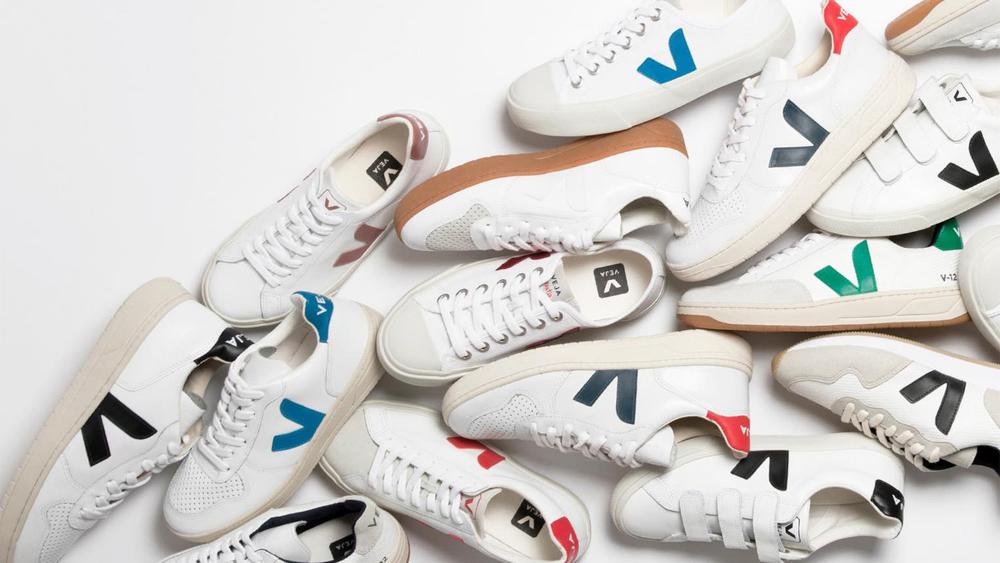
Sustainability in the footwear segment. Where are we now, what are the main trends?

The EU is moving towards a climate neutral and circular economy, which means that any product today must be more energy efficient, durable, reusable, repairable and recyclable. The fashion and textile industries, known to have a big impact on the environment, are at the forefront of change and sustainability. Innovative materials created from materials recycled and recycled in the future, new technologies in traditional leather industries, collaborations with environmental experts, and most importantly, complete transparency of the entire chain - these are the main vectors for the development of the shoe industry today. Let's look at the best practices of market leaders in order to understand what steps are possible in order to start in this direction. Understanding sustainability trends with expert Olga Steinberg.
 Olga Steinberg - Managing Director of Sees.Group, a communication agency specializing in sustainable development, author of the Telegram channel "Fashion-pumping".
Olga Steinberg - Managing Director of Sees.Group, a communication agency specializing in sustainable development, author of the Telegram channel "Fashion-pumping". Sees.Group is a communications agency that helps brands find their stories to engage in dialogue and build trust. Specialization - all types of communications (PR, social networks, influencers, B2B marketing). One of the agency's key focuses is sustainable development. In this direction, the agency develops strategies, activates programs, involves communities and stakeholders in sustainable development initiatives, and also communicates in this direction.
Innovative materials
Perhaps this is one of the most actively developing areas in the footwear industry. It is clear that only large brands can develop at a high level and with the possibility of scaling. But they are the drivers of the entire market. Today for them it is one of the new directions for business development. A prime example is Gucci's plant-based leather substitute Demetra. It is a new material that is 77% plant-based, a blend of viscose and wood pulp from sustainable forest sources, and bio-based polyurethane from renewable sources. It combines quality, softness, durability, environmental friendliness and - importantly - scalability. Gucci plans to make Demetra available to the entire fashion industry from 2022. It took the company two years of research and development to develop the material.
The fact that companies are investing in such developments confirms the growing importance of ethical and sustainable practices in the fashion industry.
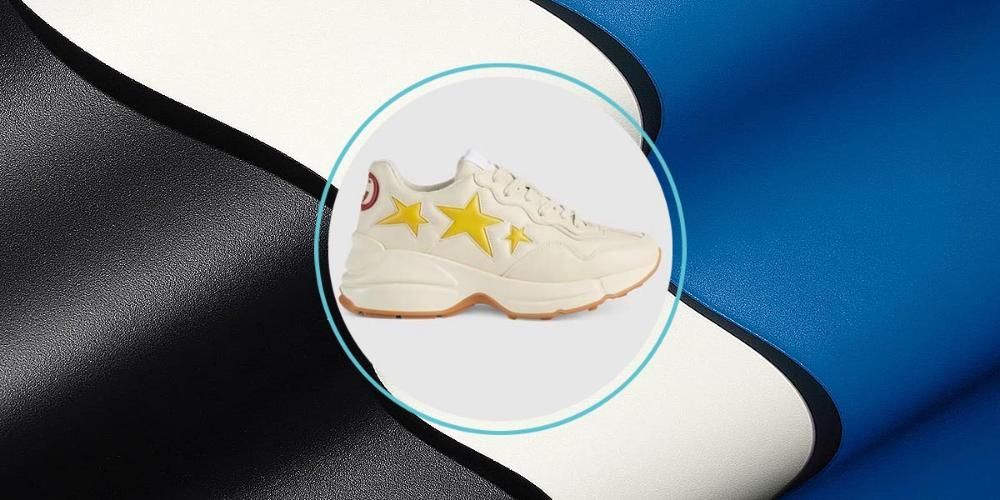
In addition, the use of non-environmentally friendly components is minimized in new products and ongoing research is underway to replace them. Demetra waste generated during production will be recycled and reused.
Demetra is produced in the Gucci factory in Italy using the same tanning processes as for genuine leather. This allows you to make the material soft, durable, elastic and pliable.
The first products made from Demetra were the Gucci Basket, Gucci New Ace and Gucci Rhyton sneakers - most of the upper and part of the lining are made of this material.
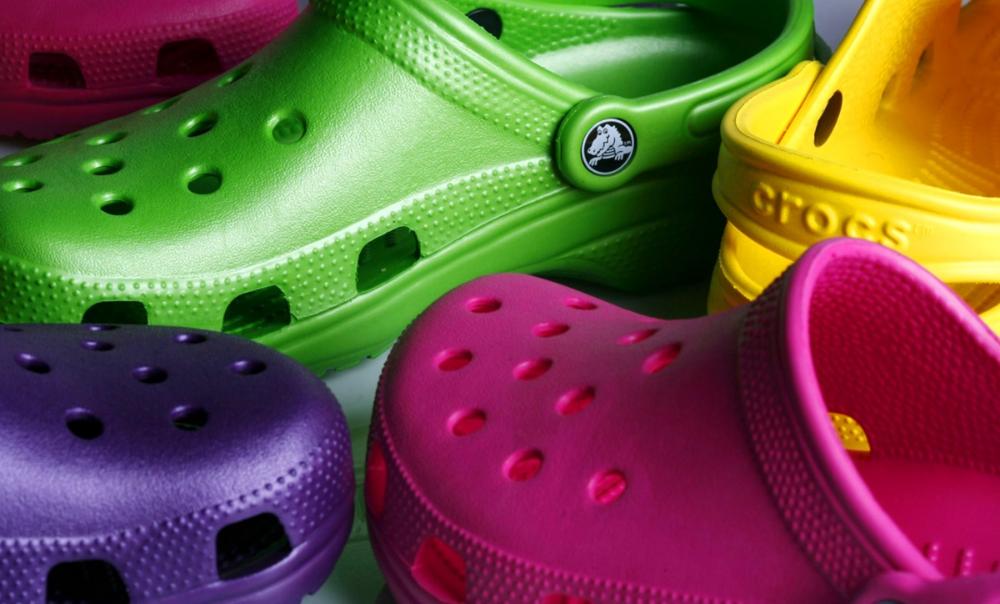
Developed a new material and American Crocs. The company promises that their shoes will be 100% bio-based. The new material Ecolibrium is synthesized from hydrocarbons extracted from renewable resources and organic waste - palm oil and cellulose paper. The innovative material was developed in collaboration with Dow, a global materials company specializing in the recycling of biological and industrial waste into footwear products.
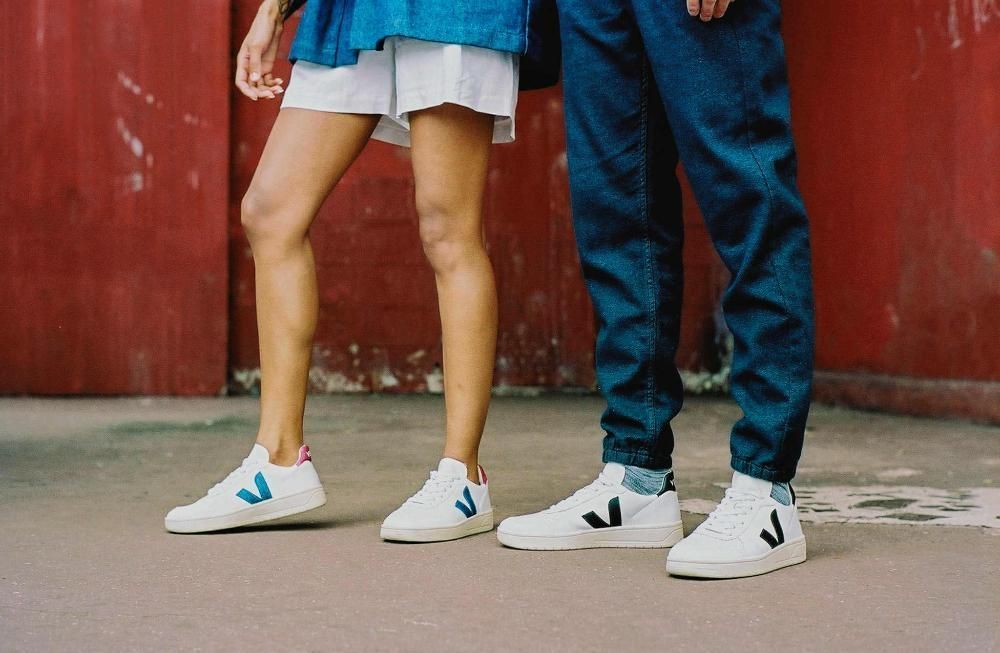
Small brands are also actively involved in development. Here we highlight the French manufacturer of sneakers VEJA, which fully follows the principles of sustainable development in its work. The company uses organic cotton grown by farmers' associations in Brazil and Peru. The method of its cultivation implies care and respect for people and the environment. The company purchases cotton (raw material) rather than finished fabric in a fair trade manner and predominantly uses only such cotton for the manufacture of its products. Since 2004, VEJA has purchased 195 tons of wild rubber directly from local communities in the Brazilian states, saving 120 hectares of the Amazon forest. In a shoe company, rubber is used to make the soles of sneakers: they consist of 000-18% of rubber. The purpose of this eco-campaign is to increase the economic value of the forest for its conservation.
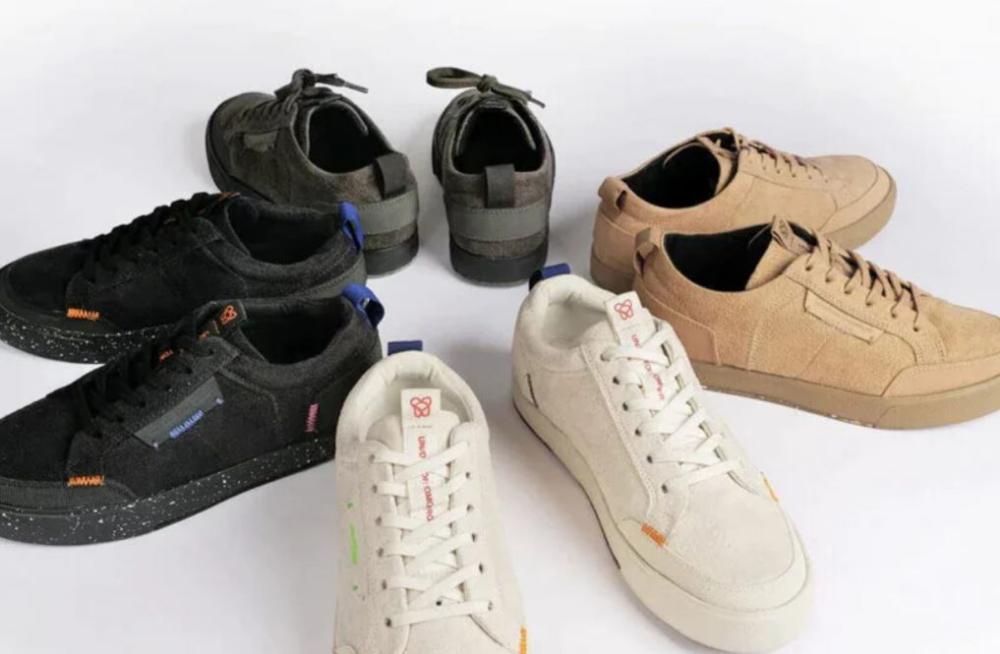
Creating materials from recycled waste is also an important area of development. So the Portuguese brand Undo for Tomorrow released sneakers made from recycled balloons. The upper of the shoe is made from recycled plastic with a water-repellent finish, making it practical for all weather. The rubber outsole of the sneaker is made from discarded balloons and tire residues, it is non-slip and quite flexible. Shoe lining made of 100% bamboo has an antibacterial effect and absorbs odors.
There are also materials from completely non-obvious raw materials. So Swiss sports brand On has created a new foam called CleanCloud that turns carbon emissions into a running shoe sole. The company has worked with biochemistry, process and polymer innovators LanzaTech and Borealis on a technology that they believe could be used in other footwear parts and products in the future. On, which claims to be the first company to use carbon emissions as the main raw material for shoe soles, hopes to use the technology in all of its shoes over time.
Startups
Meanwhile, YY Nation, a new sustainable footwear brand based in New Zealand's capital, has launched the Legacy Footwear Collection, which includes sneakers with the world's lowest carbon footprint, as verified by independent dual certification. Launching a Kickstarter campaign last year to fund its idea, YY Nation successfully met and then quadrupled its fundraising goal, raising over NZ$80 from nearly 985 like-minded people. Now, after three years of research and development, YY Nation's Nimbo shoes, made from bamboo and algae, have a carbon footprint of 500 kg of carbon dioxide equivalent (CO5,45e), three times less carbon emissions than regular running shoes.
Traditional production becomes greener
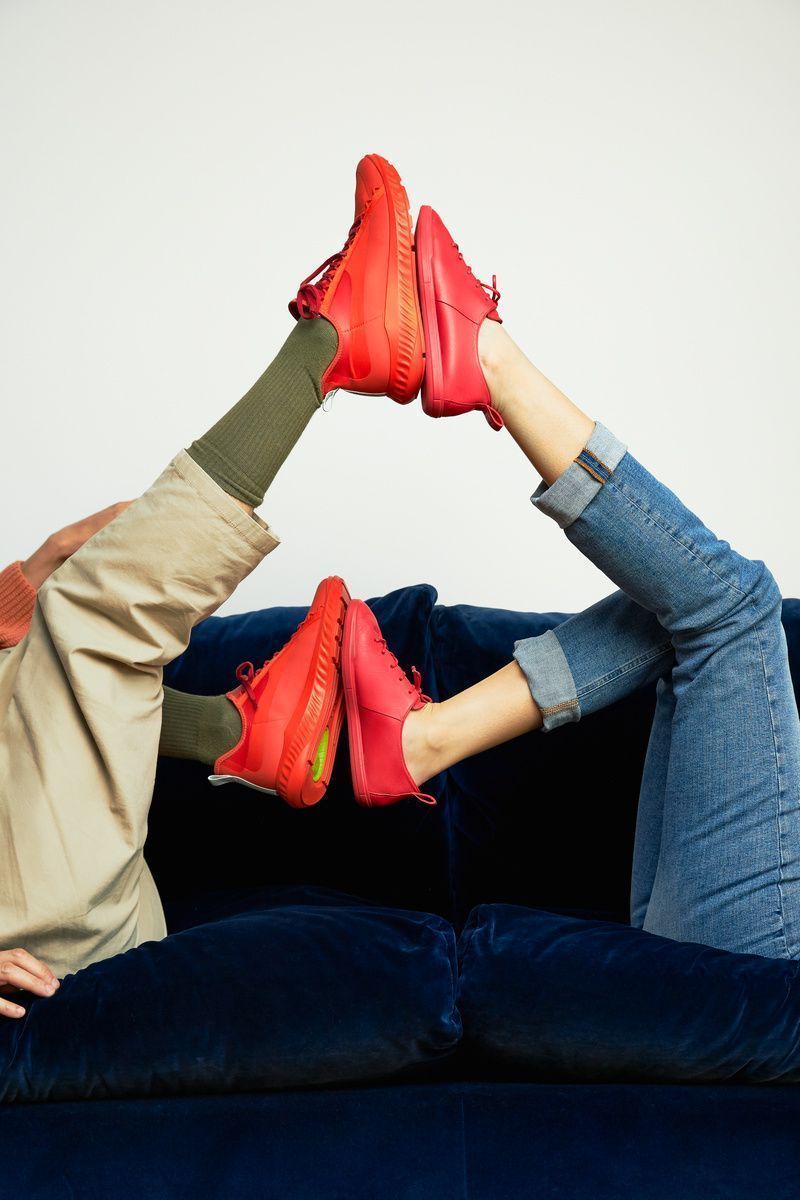
Even if the brand does not use innovative and new environmentally friendly materials, it always has a chance to contribute to the preservation of the planet's environment. As you know, the processing of leather for the further production of shoes, bags and accessories is a process that requires a huge amount of water and energy. Here we can give an example of a Danish brand Here, which has not just announced its intention to go renewable by 2028, but by the end of 2021, 100% water-free footwear production. Ecco's own applied research laboratory has been able to ensure that the tannins used in the leather processing process retain its natural collagens without the addition of water. Synthesized leather practically does not differ in the main characteristics of quality and shelf life of materials from those obtained by traditional tanning processes. In addition to saving water, technology DriTan2.0 significantly reduces the need for chemicals, virtually eliminating waste in the form of wastewater. In addition, Ecco uses materials as efficiently as possible: bags are sewn from one piece, the rest goes to belts and shoe parts. And the sole is made not from rubber, but from polyurethane, thus avoiding the use of glue.
Consumer Education
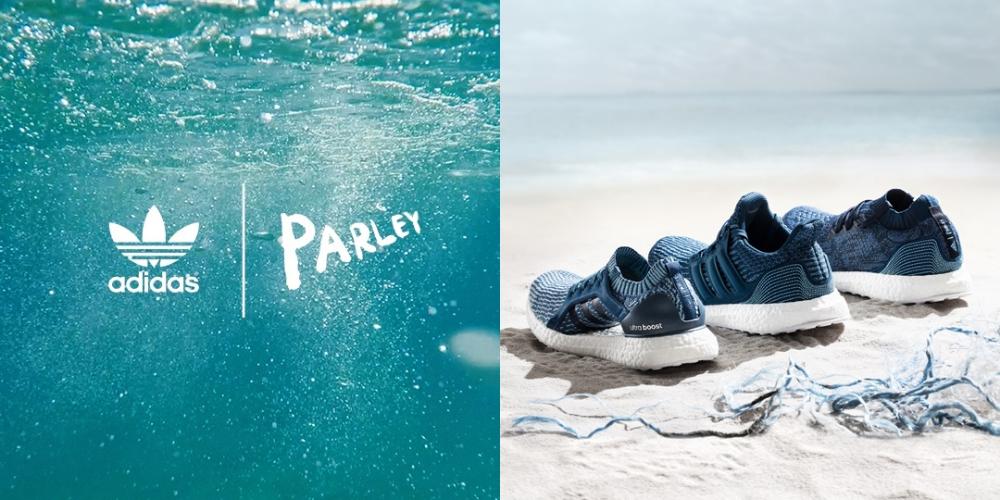
It is impossible to talk about environmental initiatives without mentioning adidas, which is perhaps one of the pioneers in this direction. Since 2015, adidas has partnered with environmental organization Parley for the Oceans to clean up plastic in the oceans. By the end of 2021, adidas plans to produce 17 million pairs of shoes using recycled plastic waste collected from beaches and coastal areas. Last year, 15 million pairs of such shoes were produced. adidas is constantly expanding its vegan offering and is completely phasing out the use of fur. In collaboration with partners, adidas develops plant-based leathers, recycled cotton, and especially climate-friendly running shoes.
Interestingly, adidas is attentive to local markets and collaborates with local influencers and experts in all of its campaigns. And they do it not only to promote their own products, but also to involve as many people as possible in the topic of ecology. So, as part of the Run for the ocean campaign this year, Bulyash Todayeva, an industrial designer, engineer in the field of sustainable development and the founder of the Zerowastelab project, and Alexei Bakhmetiev, a TV presenter known for his upcycle inventions, became brand ambassadors. Together with Bulyash, adidas developed and launched the adidas Telegram chatbot “Kroshka”, which in an accessible form told subscribers about simple household eco-habits and shared tips for a conscious lifestyle. Together with Kroshka, users determined plastic labels from photographs, found the nearest waste recycling and sorting point, received useful information from experts, and got acquainted with the topic of ecology in a fascinating way. Thus, companies are engaged not only directly in the development of new materials, but also in the education of the consumer, involving him in an environmentally friendly lifestyle.
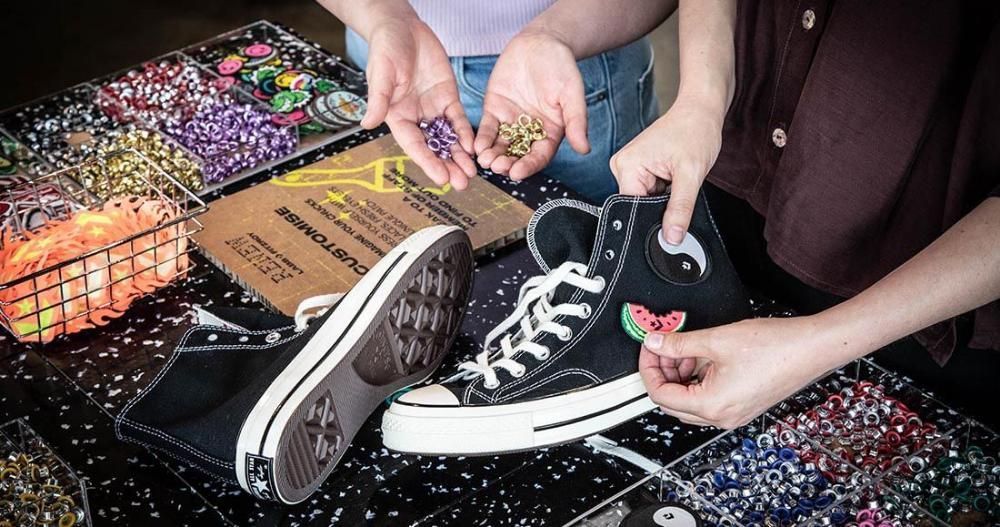
Draws attention to the problems of ocean debris and the legendary Converse. This year they opened a Renew Labs virtual store on a garbage island in the Pacific Ocean. This island is made up of 80 tons of plastic and covers an area larger than France. Renew Labs is a hybrid reality project that allows visitors from all over the world to walk and shop on the trash island. It features a collection of eco shoes designed by All Stars, young creators who are concerned about the world's environmental issues. They used technologies with the least harmful waste, from innovative to more familiar methods. Funds raised by Converse from sales of sneakers will be used to pay for the cleanup of the Pacific Ocean and the elimination of garbage.
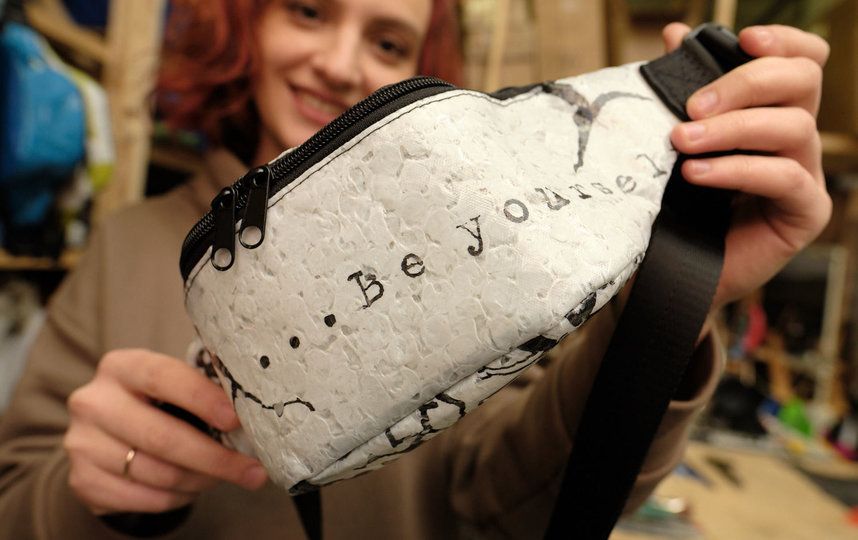
From the Russian "enlighteners" I want to talk about the recycle99 project. Initially conceived as a brand of accessories and interior items made from recycled plastic and recycled materials, it is also actively involved in educational activities. The children conduct excursions to the plastic recycling shop, educational workshops on an eco-friendly lifestyle. The project collaborates with various companies to create eco-friendly merchandise for them and simply makes interesting collaborations, including cosmetic bags made of recycled LDPE film for Flacon magazine, raincoats from packaging for the logistics company SDEK, furniture for the shu.archive store and many other interesting products made from recycled raw materials. recycle99 also created a gift box for a Stan Smith tracksuit and sneakers made from recycled plastic for adidas. Through this project, they recycled 150 kg of HDPE plastic caps (2) into 48 boxes. It is 100% recycle. No virgin material is included in these products.
processing
There are also shoe retailers in Russia who are concerned about recycling. One of them is Rendez-Vous. Since 2019, they have been collecting shoes in their stores (and you can also give two pairs to a courier delivering an online order) and transfer them to the Dmitrovsky RTI plant. At the factory, shoes will be sorted by materials and processed into small crumbs, from which they will make safe rubber surfaces for stadiums, sports tracks, courts and playgrounds.
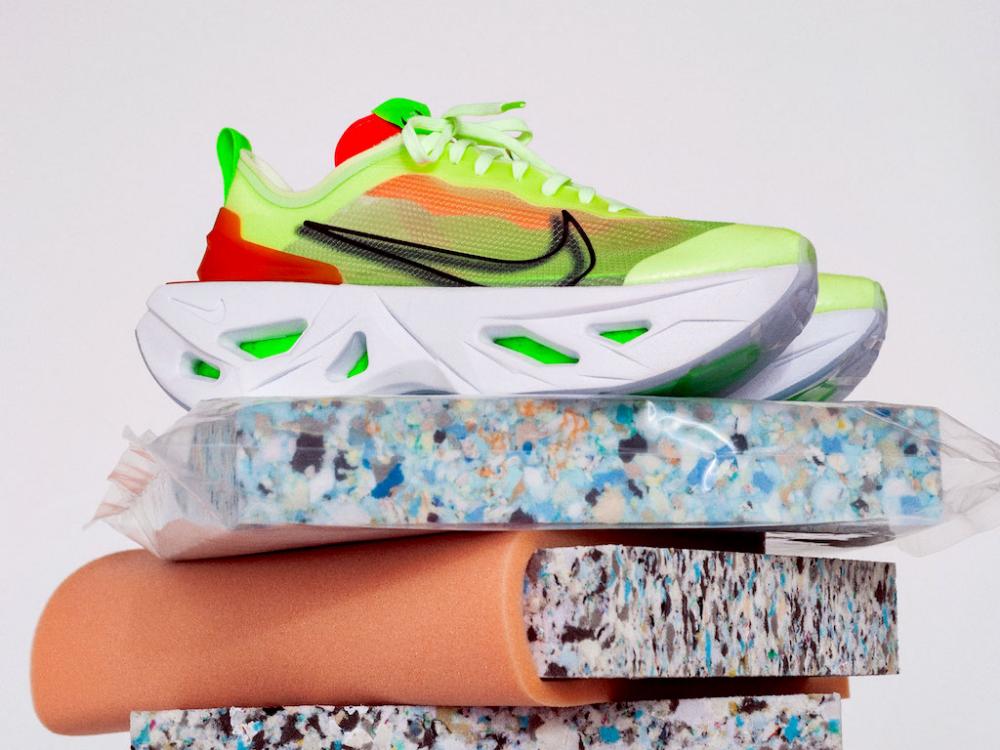
The origins of this use of shoes come from Nike, from the early 1990s. It was then that Nike's Steve Potter began experimenting with grinding up old sneakers and gear to make new raw materials from them. All this resulted in the massive Reuse-A-Shoe program, which has officially been in existence since 1993, when Nike opened a basketball court at its distribution center in Wilsonville, Oregon. The surface of the court was made from the resulting material, and it was called the Nike Grind. Since then, the sports brand and partners have recycled more than 60 tons of waste, including 30 million pairs of sneakers, for Nike Grind. Today, Nike Grind grinds a wide range of waste, from excess to out-of-print samples and scrap. The company's mission is to reduce waste wherever possible and reuse it whenever possible. Over the years, Nike Grind technology has been used in completely different areas. As a raw material for artificial turf and soccer balls, for running tracks and soles.
Sustainable development today is not just words. There are always opportunities for companies in any industry to find their own vectors in order to start moving towards the sustainability of their own business and thus become more attractive to both their customers and potential investors. After all, it is the sustainable companies that think not only about profit growth, but also take actions aimed at a positive impact on the environment and society, that will be the most successful in the future.
1. Innovative materials created from materials recycled and recycled in the future, new technologies in traditional leather industries, collaborations with environmental experts, and most importantly, complete transparency of the entire chain - these are the main vectors for the development of the shoe industry today.
2. Materials from completely non-obvious raw materials also appear. So Swiss sports brand On has created a new foam called CleanCloud that turns carbon emissions into a running shoe sole.
3. Even if the brand does not use innovative and new environmentally friendly materials, it always has a chance to contribute to the preservation of the planet's environment. For example, like the Danish ECCO, by reducing the amount of water used in the leather processing process.
4. Many leading brands, for example, adidas, are not only directly involved in the development of new materials and eco-technologies, but also in the education of the consumer, involving him in an eco-friendly lifestyle.
| Please rate the article |
Materials on the topic
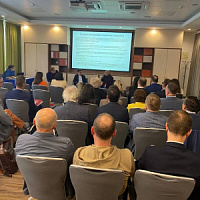
Results of the round table of shoemakers with the Ministry of Industry and Trade of the Russian Federation, CRPT, NOBS and Wildberries

World Footwear Yearbook: Global footwear production reaches 23,9 billion pairs and is back to pre-pandemic levels
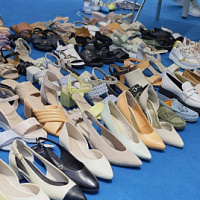
How to double the sales of a shoe store?
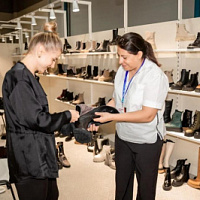
New direction of exhibitions in Alma-Ata: Euro Shoes @ Elite Line & CAF
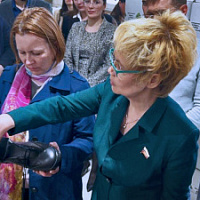
Round table with representatives of shoe factories of Dagestan with the support of the Ministry of Industry and Trade and NOBS
Popular
 Coach turned to Big Data analysis and won the interest of a young audience
American handbag brand Coach has planned the success of its Tabby model among a younger audience, Generation Z, by turning to big data analysis, abandoning traditional and analogue tools, such as human intuition or the ability of any executive to sense “which way the wind will blow,” writes B.O.F.
Coach turned to Big Data analysis and won the interest of a young audience
American handbag brand Coach has planned the success of its Tabby model among a younger audience, Generation Z, by turning to big data analysis, abandoning traditional and analogue tools, such as human intuition or the ability of any executive to sense “which way the wind will blow,” writes B.O.F.
 IDOL updates the concept
The IDOL brand, part of the Melon Fashion Group portfolio, opened the first flagship in an updated concept in the Aviapark shopping center in Moscow.
IDOL updates the concept
The IDOL brand, part of the Melon Fashion Group portfolio, opened the first flagship in an updated concept in the Aviapark shopping center in Moscow.
 Current techniques in lighting a shoe store
Today, walking through the galleries of shopping centers, we see a variety of formats of offline stores. New concepts of retail spaces attract with an individual, memorable design. In a certain sense, they are an element of the show, a tool through which the buyer receives a new and interesting experience. Together with SR expert in the field of lighting technology in retail, Tatyana Ryzhova, we will look at current lighting design techniques for modern shoe stores, which we will see more and more often in new retail outlets in the near future.
Current techniques in lighting a shoe store
Today, walking through the galleries of shopping centers, we see a variety of formats of offline stores. New concepts of retail spaces attract with an individual, memorable design. In a certain sense, they are an element of the show, a tool through which the buyer receives a new and interesting experience. Together with SR expert in the field of lighting technology in retail, Tatyana Ryzhova, we will look at current lighting design techniques for modern shoe stores, which we will see more and more often in new retail outlets in the near future.
 Seven “sins” of the shoe business. How do owners harm the company with their own hands?
Why is Company X able to create a strong, profitable brand, but Company Y is struggling to make ends meet? Many people prefer to attribute success to luck, luck, or the support of strong patrons. And few people ask themselves the question: “What am I doing wrong?” Moreover, many entrepreneurs begin to harm their business from the first day of its opening. In this article, together with SR expert in the field of fashion business management and development, Maria Gerasimenko, we will look at the 7 main “sins” that business owners commit using specific examples.
Seven “sins” of the shoe business. How do owners harm the company with their own hands?
Why is Company X able to create a strong, profitable brand, but Company Y is struggling to make ends meet? Many people prefer to attribute success to luck, luck, or the support of strong patrons. And few people ask themselves the question: “What am I doing wrong?” Moreover, many entrepreneurs begin to harm their business from the first day of its opening. In this article, together with SR expert in the field of fashion business management and development, Maria Gerasimenko, we will look at the 7 main “sins” that business owners commit using specific examples.
 Louis Vuitton opens a new factory in Italy
Louis Vuitton has opened its second shoe factory in Italy. After opening the first one in Fiesso d'Artico in Veneto, the LVMH flagship brand has just opened a new production site dedicated to this category of footwear in the industrial zone of Civitano in the Marche region. There is also another brand production facility in Tuscany, where bags and leather accessories are produced, writes fr.fashionnetwork.com.
Louis Vuitton opens a new factory in Italy
Louis Vuitton has opened its second shoe factory in Italy. After opening the first one in Fiesso d'Artico in Veneto, the LVMH flagship brand has just opened a new production site dedicated to this category of footwear in the industrial zone of Civitano in the Marche region. There is also another brand production facility in Tuscany, where bags and leather accessories are produced, writes fr.fashionnetwork.com.
 The Euro Shoes@CAF exhibition will be held in Almaty
From March 11 to 13, the Euro Shoes@CAF (Central Asia Fashion) exhibition will be held in Almaty at the Atakent exhibition complex. The exhibition, which is the largest international event in the fashion industry in Central Asia, will present collections of clothing, shoes and accessories.
The Euro Shoes@CAF exhibition will be held in Almaty
From March 11 to 13, the Euro Shoes@CAF (Central Asia Fashion) exhibition will be held in Almaty at the Atakent exhibition complex. The exhibition, which is the largest international event in the fashion industry in Central Asia, will present collections of clothing, shoes and accessories.
 Euro Shoes will start operating on February 19 in Moscow!
The winter session of the international exhibition of footwear and accessories Euro Shoes premiere collection will be held in Moscow at the Expocenter from February 19 to 22. The organizers promise the presence of all the main participants at the exhibition, as well as new names from Europe, Asia and Russia.
Euro Shoes will start operating on February 19 in Moscow!
The winter session of the international exhibition of footwear and accessories Euro Shoes premiere collection will be held in Moscow at the Expocenter from February 19 to 22. The organizers promise the presence of all the main participants at the exhibition, as well as new names from Europe, Asia and Russia.
 American buyers couldn't buy Birkin bags and sued Hermès
French fashion house Hermès is facing a lawsuit in California from two customers who were unable to purchase exclusive Birkin bags. The fashion house is accused of unfair commercial practices.
American buyers couldn't buy Birkin bags and sued Hermès
French fashion house Hermès is facing a lawsuit in California from two customers who were unable to purchase exclusive Birkin bags. The fashion house is accused of unfair commercial practices.
 Why Rendez-Vous and Yandex Lavka released a “bread bag”
Shoe retailer Rendez-Vous announced the launch of a spring collaboration with Yandex Lavka and released a roll that resembles the shape of a woman’s handbag. This “Bread Bag” is presented in the Yandex.Lavka application at a price of 249 rubles. On the product packaging there is a promotional code for 1000 rubles, which can be spent in the Rendez-Vous network.
Why Rendez-Vous and Yandex Lavka released a “bread bag”
Shoe retailer Rendez-Vous announced the launch of a spring collaboration with Yandex Lavka and released a roll that resembles the shape of a woman’s handbag. This “Bread Bag” is presented in the Yandex.Lavka application at a price of 249 rubles. On the product packaging there is a promotional code for 1000 rubles, which can be spent in the Rendez-Vous network.
 Camper has released innovative sneakers - designers
Spanish brand Camper's new Roku sneaker features six interchangeable components to create up to 64 different looks and color combinations. Roku means "six" in Japanese.
Camper has released innovative sneakers - designers
Spanish brand Camper's new Roku sneaker features six interchangeable components to create up to 64 different looks and color combinations. Roku means "six" in Japanese.
 Christian Louboutin presented a collection in a cowboy style
At the Loubi Show in Paris, the French luxury brand Christian Louboutin presented its fall 2024 collection, following the trend - in the style of the Wild West. It included cowboy boots and rhinestone loafers.
Christian Louboutin presented a collection in a cowboy style
At the Loubi Show in Paris, the French luxury brand Christian Louboutin presented its fall 2024 collection, following the trend - in the style of the Wild West. It included cowboy boots and rhinestone loafers.
 Turkish brand Vaneda on Euro Shoes
Street style, sport, outdoor, military – the main style directions of footwear of the company from Turkey
Turkish brand Vaneda on Euro Shoes
Street style, sport, outdoor, military – the main style directions of footwear of the company from Turkey
 Fashion Week takes place in Moscow
Fashion Week takes place in the Russian capital. Events include fashion shows, markets where you can purchase clothes, bags and accessories, and a B2B Showroom for fashion industry professionals.
Fashion Week takes place in Moscow
Fashion Week takes place in the Russian capital. Events include fashion shows, markets where you can purchase clothes, bags and accessories, and a B2B Showroom for fashion industry professionals.
 We are ready for active development in the Russian market
Friedrich Naumann, CEO of the Tamaris brand, told Shoes Report about the company’s ambitious plans, business development in Russia and expansion of the retail network, and also shared details about new collections and launches.
We are ready for active development in the Russian market
Friedrich Naumann, CEO of the Tamaris brand, told Shoes Report about the company’s ambitious plans, business development in Russia and expansion of the retail network, and also shared details about new collections and launches.
 Fashion trends Fall-Winter 2023/24 for commercial footwear purchases
Permanent contributor to Shoes Report. Elena Vinogradova, an expert in sales and purchases in the fashion business, prepared an overview of the trends for the autumn-winter 2023/24 season especially for us.
Fashion trends Fall-Winter 2023/24 for commercial footwear purchases
Permanent contributor to Shoes Report. Elena Vinogradova, an expert in sales and purchases in the fashion business, prepared an overview of the trends for the autumn-winter 2023/24 season especially for us.
 MSCHF and Crocs launch "Big Yellow Boots"
Creator of the Big Red Boots, Brooklyn brand MSCHF has teamed up with American plastic clog and sandal brand Crocs for another oversized shoe. The new Big Yellow Boots will go on sale on August 9th.
MSCHF and Crocs launch "Big Yellow Boots"
Creator of the Big Red Boots, Brooklyn brand MSCHF has teamed up with American plastic clog and sandal brand Crocs for another oversized shoe. The new Big Yellow Boots will go on sale on August 9th.
 Five rules of professional lighting for a shoe store - something that is relevant in any season
When developing a lighting concept for shoe retailers, it is important to take into account not only the history of the brand, the architectural content of the premises, the target audience of the stores, but also the seasonality of the goods. With the onset of the cold season, client preferences change: bright weightless shoes are replaced by more massive models in discreet dark colors. Despite significant differences in summer and winter collections, the overall philosophy of the brand, its recognition should remain unchanged at any time of the year. Tatyana Ryzhova, an SR lighting expert in fashion retail, has identified five basic rules for a competent lighting concept for a shoe store for readers of the magazine, which will help to present winter assortment to customers in a winning way.
Five rules of professional lighting for a shoe store - something that is relevant in any season
When developing a lighting concept for shoe retailers, it is important to take into account not only the history of the brand, the architectural content of the premises, the target audience of the stores, but also the seasonality of the goods. With the onset of the cold season, client preferences change: bright weightless shoes are replaced by more massive models in discreet dark colors. Despite significant differences in summer and winter collections, the overall philosophy of the brand, its recognition should remain unchanged at any time of the year. Tatyana Ryzhova, an SR lighting expert in fashion retail, has identified five basic rules for a competent lighting concept for a shoe store for readers of the magazine, which will help to present winter assortment to customers in a winning way.
 I doubt and object: how to find an approach to difficult clients?
How good and serene would be the work of a salesperson if the customers were calm, cheerful, always knew exactly what they wanted, and bought, bought, bought! It is a pity that this is possible only in dreams. Therefore, we will not dream, but we will act. Together with Maria Gerasimenko, a permanent author of SR, we understand the doubts and objections of buyers and build a strategy for working with them. Our expert pays special attention to the two main objections of buyers, on which 82% of sales are lost.
I doubt and object: how to find an approach to difficult clients?
How good and serene would be the work of a salesperson if the customers were calm, cheerful, always knew exactly what they wanted, and bought, bought, bought! It is a pity that this is possible only in dreams. Therefore, we will not dream, but we will act. Together with Maria Gerasimenko, a permanent author of SR, we understand the doubts and objections of buyers and build a strategy for working with them. Our expert pays special attention to the two main objections of buyers, on which 82% of sales are lost.
 EURO SHOES presents an updated section of the GLOBAL SHOES exhibition with collections of shoe and bag brands from Asian countries
EURO SHOES premiere collection is expanding. Along with the traditional pool of leading European footwear brands from Germany, Spain, Italy and Turkey, several dozen footwear and bag brands from the Middle Kingdom will be presented in the GLOBAL SHOES section at the Moscow Expocentre from August 29 to September 1.
EURO SHOES presents an updated section of the GLOBAL SHOES exhibition with collections of shoe and bag brands from Asian countries
EURO SHOES premiere collection is expanding. Along with the traditional pool of leading European footwear brands from Germany, Spain, Italy and Turkey, several dozen footwear and bag brands from the Middle Kingdom will be presented in the GLOBAL SHOES section at the Moscow Expocentre from August 29 to September 1.
 World Footwear Yearbook: Global footwear production reaches 23,9 billion pairs and is back to pre-pandemic levels
The Portuguese association of shoe manufacturers APICCAPS published the 13th edition of the international statistical bulletin World Footwear Yearbook for 2023, according to which in 2022 the production and export of shoes worldwide increased by 7,6% and 9%, respectively, and the world production of shoes reached 23,9 billion couples and returned to pre-pandemic levels.
World Footwear Yearbook: Global footwear production reaches 23,9 billion pairs and is back to pre-pandemic levels
The Portuguese association of shoe manufacturers APICCAPS published the 13th edition of the international statistical bulletin World Footwear Yearbook for 2023, according to which in 2022 the production and export of shoes worldwide increased by 7,6% and 9%, respectively, and the world production of shoes reached 23,9 billion couples and returned to pre-pandemic levels.
 Rostov footwear brand Novak presented a collection of sneakers and sneakers
In the spring-summer 2023 season, the Rostov-on-Don shoe brand Novak presented a cute collection of sneakers and sneakers for every day. The upper of the shoe is made of genuine leather, suede, nubuck, the sole is made of light EVA.
Rostov footwear brand Novak presented a collection of sneakers and sneakers
In the spring-summer 2023 season, the Rostov-on-Don shoe brand Novak presented a cute collection of sneakers and sneakers for every day. The upper of the shoe is made of genuine leather, suede, nubuck, the sole is made of light EVA.
 Jacquemus x Nike collaboration released
The second collaboration between Jacquemus and Nike, which has been talked about so much, is finally out. The appearance of the couple for many was a surprise. The model of Nike Air Force 1 sneakers, which was taken as the basis of the new collection, has undergone significant changes.
Jacquemus x Nike collaboration released
The second collaboration between Jacquemus and Nike, which has been talked about so much, is finally out. The appearance of the couple for many was a surprise. The model of Nike Air Force 1 sneakers, which was taken as the basis of the new collection, has undergone significant changes.
 Crocs releases a collaboration with Barbie
If Barbie ditched heels and wore crocs, they would be pink. It was this collection in pink that was released by the American brand of plastic clogs Crocs, for the release of the film "Barbie" in the United States.
Crocs releases a collaboration with Barbie
If Barbie ditched heels and wore crocs, they would be pink. It was this collection in pink that was released by the American brand of plastic clogs Crocs, for the release of the film "Barbie" in the United States.
 Japanese BAPE takes to the catwalk MSCHF Big Red Boots
The story of Brooklyn brand MSCHF's oversized rubber boots continues. The last time they made noise in the auditorium was at the Rick Owens menswear show. Now they have already appeared on the podium.
Japanese BAPE takes to the catwalk MSCHF Big Red Boots
The story of Brooklyn brand MSCHF's oversized rubber boots continues. The last time they made noise in the auditorium was at the Rick Owens menswear show. Now they have already appeared on the podium.
 Shoe educational program: what shoe soles are made of
“What is the difference between TEP and EVA? What does tunit promise me? Is PVC glue? What is the sole of these shoes made of? ”- the modern buyer wants to know everything. In order not to smash his face in front of him and be able to explain whether such a sole suits him in soles, carefully read this article. In it, process engineer Igor Okorokov tells what materials the soles of shoes are made of and what makes each of them so good.
Shoe educational program: what shoe soles are made of
“What is the difference between TEP and EVA? What does tunit promise me? Is PVC glue? What is the sole of these shoes made of? ”- the modern buyer wants to know everything. In order not to smash his face in front of him and be able to explain whether such a sole suits him in soles, carefully read this article. In it, process engineer Igor Okorokov tells what materials the soles of shoes are made of and what makes each of them so good.
 How to set prices that will earn
Some businessmen still confuse the concept of margin with the concept of trade margins and set prices for their goods, guided solely by the example of competitors. No wonder they go broke! Analyst at the Academy of Retail Technologies Maxim Gorshkov gives several tips and formulas with which you can set not only ruinous, but also profitable prices.
How to set prices that will earn
Some businessmen still confuse the concept of margin with the concept of trade margins and set prices for their goods, guided solely by the example of competitors. No wonder they go broke! Analyst at the Academy of Retail Technologies Maxim Gorshkov gives several tips and formulas with which you can set not only ruinous, but also profitable prices.
 Sales of shoes and accessories: effective techniques for business rhetoric
Which speech modules are effective in communicating with potential and current customers of shoe stores, and which are not, Anna Bocharova, a business consultant, knows.
Sales of shoes and accessories: effective techniques for business rhetoric
Which speech modules are effective in communicating with potential and current customers of shoe stores, and which are not, Anna Bocharova, a business consultant, knows.
 We form the salary of sellers: expert advice
“How do you charge your consultants for personal or general sales?” Is one of the most popular questions causing a lot of controversy and gossip on the online forums of retail business owners. Indeed, how to properly form the earnings of sellers? But what about bonuses, where to get a sales plan from, do employees allow them to buy goods at discounted stores? In search of truth, the Shoes Report turned to a dozen shoe retailers, but no company wanted to disclose its motivation system - the process of its development was too complicated and individual. Then we asked four business consultants, and finally became convinced that the topic of seller motivation is very complex, because even our experts could not come to a common opinion.
We form the salary of sellers: expert advice
“How do you charge your consultants for personal or general sales?” Is one of the most popular questions causing a lot of controversy and gossip on the online forums of retail business owners. Indeed, how to properly form the earnings of sellers? But what about bonuses, where to get a sales plan from, do employees allow them to buy goods at discounted stores? In search of truth, the Shoes Report turned to a dozen shoe retailers, but no company wanted to disclose its motivation system - the process of its development was too complicated and individual. Then we asked four business consultants, and finally became convinced that the topic of seller motivation is very complex, because even our experts could not come to a common opinion.
 Technology Selling Issues
There is nothing worse than meeting the buyer with the words “Hello, can I help you with something?”, Because the seller works in the store just to help. Criticizing this well-established pattern of communication with the buyer, Andrei Chirkarev, business coach for effective sales and the founder of the New Economy project, shares the technology of truly selling issues with readers of Shoes Report.
Technology Selling Issues
There is nothing worse than meeting the buyer with the words “Hello, can I help you with something?”, Because the seller works in the store just to help. Criticizing this well-established pattern of communication with the buyer, Andrei Chirkarev, business coach for effective sales and the founder of the New Economy project, shares the technology of truly selling issues with readers of Shoes Report.
 The whole truth about Bayer. Who is he and how to become one?
Bayer is no longer a new, but still a popular and sought-after profession. It’s fashionable to be a buyer. Buyers are at the origins of the emergence and development of trends. If the designer offers his vision of fashion in the season, then the buyer selects the most interesting commercial ideas. It is on buyers that the policy of sales of stores and what, in the end, the buyer will wear depends on. This profession is surrounded by a magical fleur, often associated with a lack of understanding of what exactly is the work of a buyer.
The whole truth about Bayer. Who is he and how to become one?
Bayer is no longer a new, but still a popular and sought-after profession. It’s fashionable to be a buyer. Buyers are at the origins of the emergence and development of trends. If the designer offers his vision of fashion in the season, then the buyer selects the most interesting commercial ideas. It is on buyers that the policy of sales of stores and what, in the end, the buyer will wear depends on. This profession is surrounded by a magical fleur, often associated with a lack of understanding of what exactly is the work of a buyer.
 Fur, and not only: types of lining
In the production of winter footwear, various materials are used that are designed to retain heat and meet the requirements of consumers: natural sheepleather, artificial fur, artificial fur from natural wool and others. All types of lining fur have their own advantages and disadvantages. Let's consider the properties of each of them.
Fur, and not only: types of lining
In the production of winter footwear, various materials are used that are designed to retain heat and meet the requirements of consumers: natural sheepleather, artificial fur, artificial fur from natural wool and others. All types of lining fur have their own advantages and disadvantages. Let's consider the properties of each of them.
 Retail Arithmetic
Before you begin to solve specific problems, you need to find out how accurately all the leaders of your company understand the basic terminology of retail.
Retail Arithmetic
Before you begin to solve specific problems, you need to find out how accurately all the leaders of your company understand the basic terminology of retail.
 How to fire a worker without tears, scandal and trial
Sooner or later, any manager is faced with the need to part with an employee. Properly and on time the dismissal procedure will save the company money, and the boss himself - nerves and time. But why sometimes, knowing that a break in relations is inevitable, we put off the decision for months?
How to fire a worker without tears, scandal and trial
Sooner or later, any manager is faced with the need to part with an employee. Properly and on time the dismissal procedure will save the company money, and the boss himself - nerves and time. But why sometimes, knowing that a break in relations is inevitable, we put off the decision for months?






